China at War: A New Zealand View (Part 2)
- By Peter Harmsen
- 3 February, 2019
- No Comments
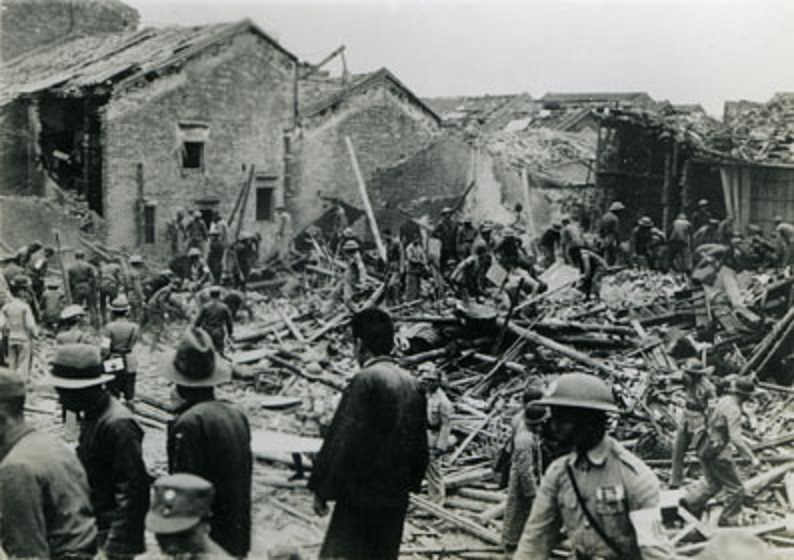
Southern China was an area in desperate crisis in the late 1930s. Up north, the densely populated areas near Shanghai and Beijing had fallen to the victorious Japanese Army, and now the soldiers of the Rising Sun were approaching. New Zealand missionaries were there to alleviate the suffering, and also to take photos of the momentous and tragic events happening around them. An example is the image above, showing soldiers and civilians searching through rubble after a Japanese air raid.
The photos on this page are reproduced with the kind permission of the Presbyterian Research Center. The center is National Agency of the Presbyterian Church of Aotearoa New Zealand, and it is affiliated with the Hewitson Library. The website can be found here, while the photos form China during the war with Japan are available here.
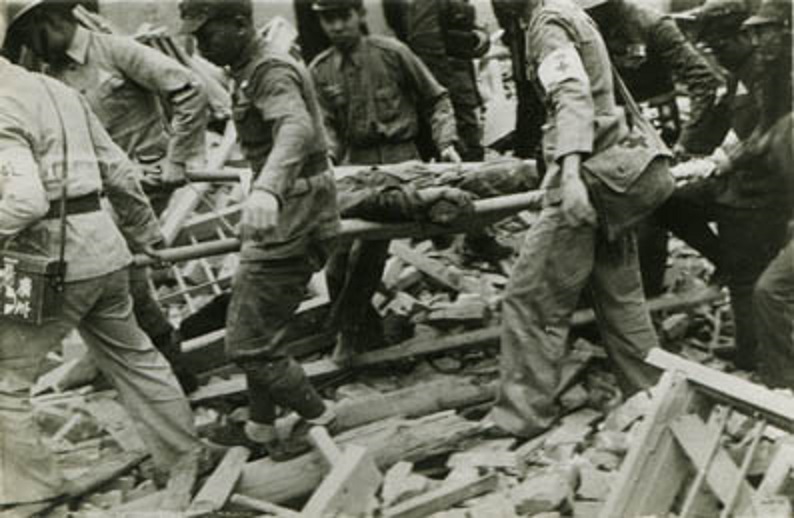
Chinese Red Cross workers and soldiers carrying an injured person on a stretcher across rubble after an aerial bomb attack, c.1938
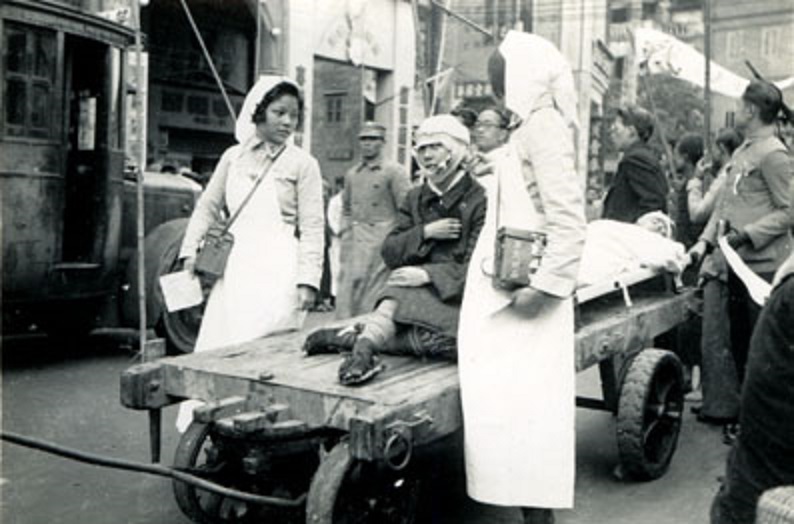
The wounded being taken to hospital on a cart, and attended by two Nurses, c.1938
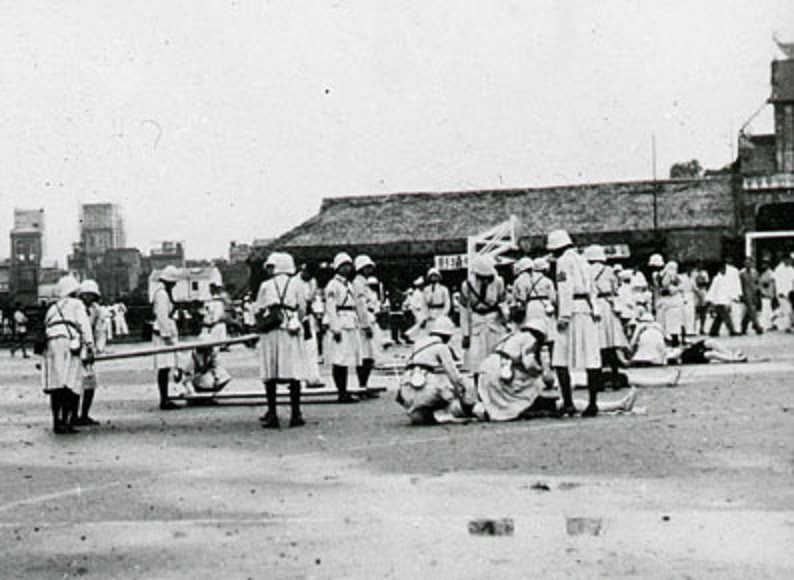
Members of the Christian ‘True Light Red Cross’ carrying out a medical drill
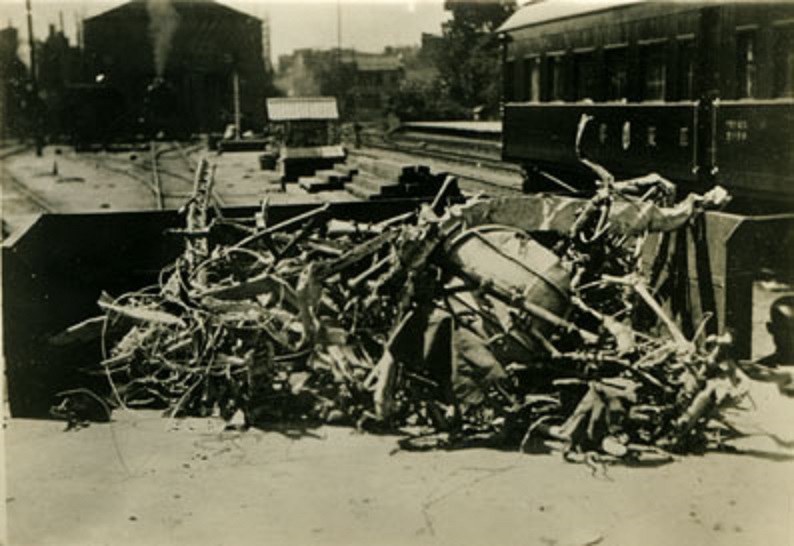
The metal remains of a wrecked plane loaded onto a Chinese Railways wagon, c.1938
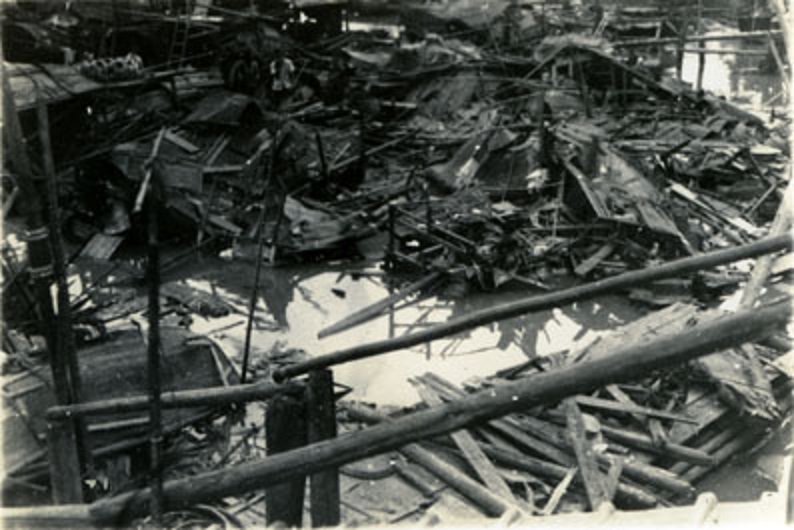
The remains of sampans on a river after being bombed by Japanese aircraft, c.1938
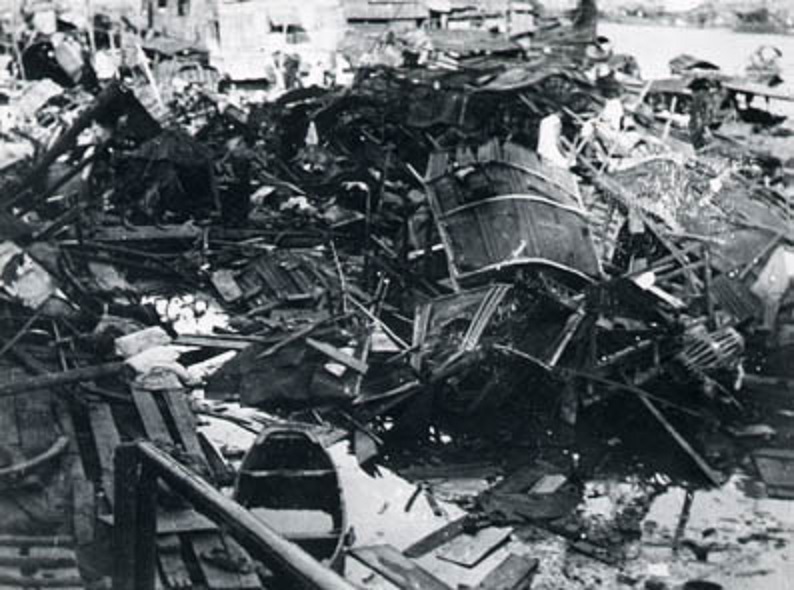
A further scene of aerial bombing damage to sampans, most probably around Guangzhou, c.1938
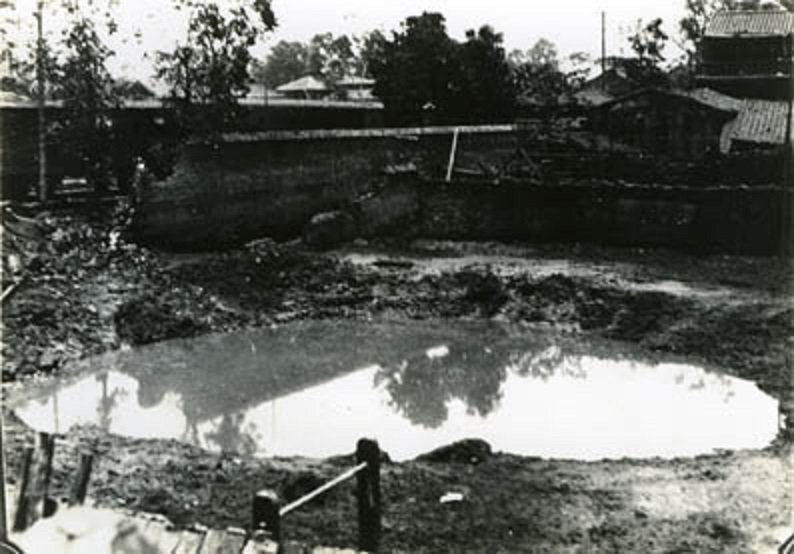
A bomb crater full of water, giving an idea of the force and extent of an aerial bomb blast, c.1938
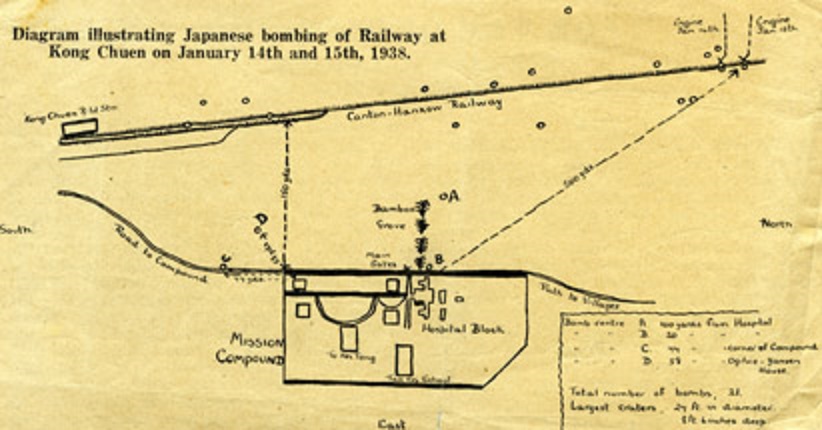
A map illustrating bomb hits (marked by small circles) along the main Canton to Hankow railway line running diagonally on upper part of map, and the Mission Hopital itself in lower centre which scored more than one direct hit, causing minor blast damage, 1938. No staff or patients were injured. The School within the Mission Compund had already been moved to Portuguese Macao for safety reasons
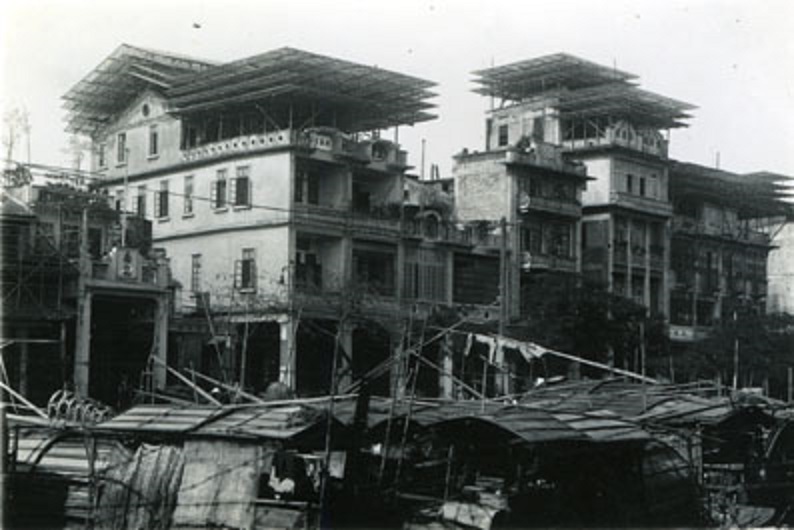
The ingenious method of protecting buildings from bomb blasts – layers of bamboo screens atop buildings. The screens of bamboo poles would explode the bombs and absorb the blast before damage could occur to the actual buildings. Guangzhou c.1938. Guangzou was bombed both by the Japanese and later by American bombers. During the latter raids, our Missionaries who were interned across the Pearl River at Honam, were confined for some days to barracks for their own safety



 Copyright © 2025
Copyright © 2025
Leave a Reply